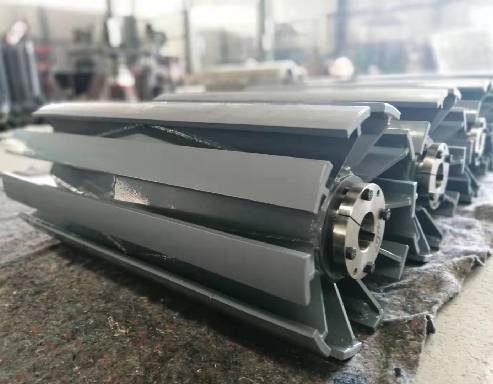 Afrikaans
Afrikaans  Albanian
Albanian  Amharic
Amharic  Arabic
Arabic  Armenian
Armenian  Azerbaijani
Azerbaijani  Basque
Basque  Belarusian
Belarusian  Bengali
Bengali  Bosnian
Bosnian  Bulgarian
Bulgarian  Catalan
Catalan  Cebuano
Cebuano  Corsican
Corsican  Croatian
Croatian  Czech
Czech  Danish
Danish  Dutch
Dutch  English
English  Esperanto
Esperanto  Estonian
Estonian  Finnish
Finnish  French
French  Frisian
Frisian  Galician
Galician  Georgian
Georgian  German
German  Greek
Greek  Gujarati
Gujarati  Haitian Creole
Haitian Creole  hausa
hausa  hawaiian
hawaiian  Hebrew
Hebrew  Hindi
Hindi  Miao
Miao  Hungarian
Hungarian  Icelandic
Icelandic  igbo
igbo  Indonesian
Indonesian  irish
irish  Italian
Italian  Japanese
Japanese  Javanese
Javanese  Kannada
Kannada  kazakh
kazakh  Khmer
Khmer  Rwandese
Rwandese  Korean
Korean  Kurdish
Kurdish  Kyrgyz
Kyrgyz  Lao
Lao  Latin
Latin  Latvian
Latvian  Lithuanian
Lithuanian  Luxembourgish
Luxembourgish  Macedonian
Macedonian  Malgashi
Malgashi  Malay
Malay  Malayalam
Malayalam  Maltese
Maltese  Maori
Maori  Marathi
Marathi  Mongolian
Mongolian  Myanmar
Myanmar  Nepali
Nepali  Norwegian
Norwegian  Norwegian
Norwegian  Occitan
Occitan  Pashto
Pashto  Persian
Persian  Polish
Polish  Portuguese
Portuguese  Punjabi
Punjabi  Romanian
Romanian  Russian
Russian  Samoan
Samoan  Scottish Gaelic
Scottish Gaelic  Serbian
Serbian  Sesotho
Sesotho  Shona
Shona  Sindhi
Sindhi  Sinhala
Sinhala  Slovak
Slovak  Slovenian
Slovenian  Somali
Somali  Spanish
Spanish  Sundanese
Sundanese  Swahili
Swahili  Swedish
Swedish  Tagalog
Tagalog  Tajik
Tajik  Tamil
Tamil  Tatar
Tatar  Telugu
Telugu  Thai
Thai  Turkish
Turkish  Turkmen
Turkmen  Ukrainian
Ukrainian  Urdu
Urdu  Uighur
Uighur  Uzbek
Uzbek  Vietnamese
Vietnamese  Welsh
Welsh  Bantu
Bantu  Yiddish
Yiddish  Yoruba
Yoruba  Zulu
Zulu Effective Solutions for Maintaining Clean Conveyor Belts in Industrial Settings
Primary Conveyor Belt Cleaners Ensuring Efficient Operations
Conveyor systems are a backbone of numerous industries, from mining and manufacturing to logistics and food processing. They streamline material handling, enhance productivity, and reduce operational costs. However, the efficiency of these systems can significantly be affected by the accumulation of material on conveyor belts. This is where primary conveyor belt cleaners come into play.
What Are Primary Conveyor Belt Cleaners?
Primary conveyor belt cleaners are specially designed tools installed on conveyor systems to remove bulk material that adheres to the belt’s surface. Positioned at the discharge point of the conveyor, they are the first line of defense against carryback—material that falls off the belt after it has transported through the system. These cleaners are essential for maintaining operational efficiency, safety, and cleanliness in the workplace.
Importance of Primary Conveyor Belt Cleaners
1. Enhancing Efficiency One of the main advantages of primary belt cleaners is that they help maintain the effectiveness of the conveyor system. When materials stick to the belt, they can cause disruptions, reducing the overall throughput of the operation. By ensuring that the belt is clean, these cleaners enable the system to operate at its maximum efficiency.
2. Reducing Maintenance Costs Carryback not only affects the operational efficiency but also leads to additional maintenance costs. Excess material can build up, necessitating cleaning operations that require labor and equipment. Additionally, it can cause premature wear on the belt and other system components. Primary belt cleaners help minimize these issues, leading to longer equipment life and reduced downtime.
3. Improving Workplace Safety Material spillage can create hazardous working conditions, increasing the chances of slips, trips, and falls. By effectively removing carryback, primary conveyor belt cleaners contribute to a safer working environment. They help keep walkways clear and minimize the risk of accidents related to material spills.
4. Promoting Environmental Responsibility In today’s world, businesses are increasingly held accountable for their environmental impact. Carryback not only contributes to waste but can also result in pollution if materials escape from the conveyor system. By utilizing primary belt cleaners, companies can reduce material loss and adhere to environmental regulations more effectively.
primary conveyor belt cleaners

Types of Primary Conveyor Belt Cleaners
There are various types of primary conveyor belt cleaners, each designed to cater to different operational needs
1. Blades These are the most common type of primary cleaners, typically made from rubber or urethane. They are adjustable and can be positioned at different angles to enhance cleaning efficiency.
2. Scraper Systems These systems utilize a scraping action to dislodge material from the belt. They are effective for heavy-duty applications and can handle stubborn buildup.
3. Brush Cleaners These incorporate rotating brushes to sweep off residual materials from the belt surface. They are ideal for delicate products that may be damaged by more aggressive cleaning methods.
4. Combination Cleaners Some setups utilize a combination of scrapers and brushes, ensuring thorough cleaning for various materials and conditions.
Conclusion
In conclusion, primary conveyor belt cleaners are crucial components of efficient material handling systems. They improve operational efficiency, reduce maintenance costs, enhance workplace safety, and support environmental stewardship. Investing in the right kind of primary belt cleaner can lead to significant long-term savings, increased productivity, and a safer working environment. As industries continue to evolve and demand higher standards of efficiency and safety, the role of these cleaners will only become more essential, making them a key focus for anyone involved in the management of conveyor systems.
By prioritizing the maintenance and functionality of primary conveyor belt cleaners, companies can ensure that their operations run smoothly, effectively, and responsibly.
-
Revolutionizing Conveyor Reliability with Advanced Rubber Lagging PulleysNewsJul.22,2025
-
Powering Precision and Durability with Expert Manufacturers of Conveyor ComponentsNewsJul.22,2025
-
Optimizing Conveyor Systems with Advanced Conveyor AccessoriesNewsJul.22,2025
-
Maximize Conveyor Efficiency with Quality Conveyor Idler PulleysNewsJul.22,2025
-
Future-Proof Your Conveyor System with High-Performance Polyurethane RollerNewsJul.22,2025
-
Driving Efficiency Forward with Quality Idlers and RollersNewsJul.22,2025





























